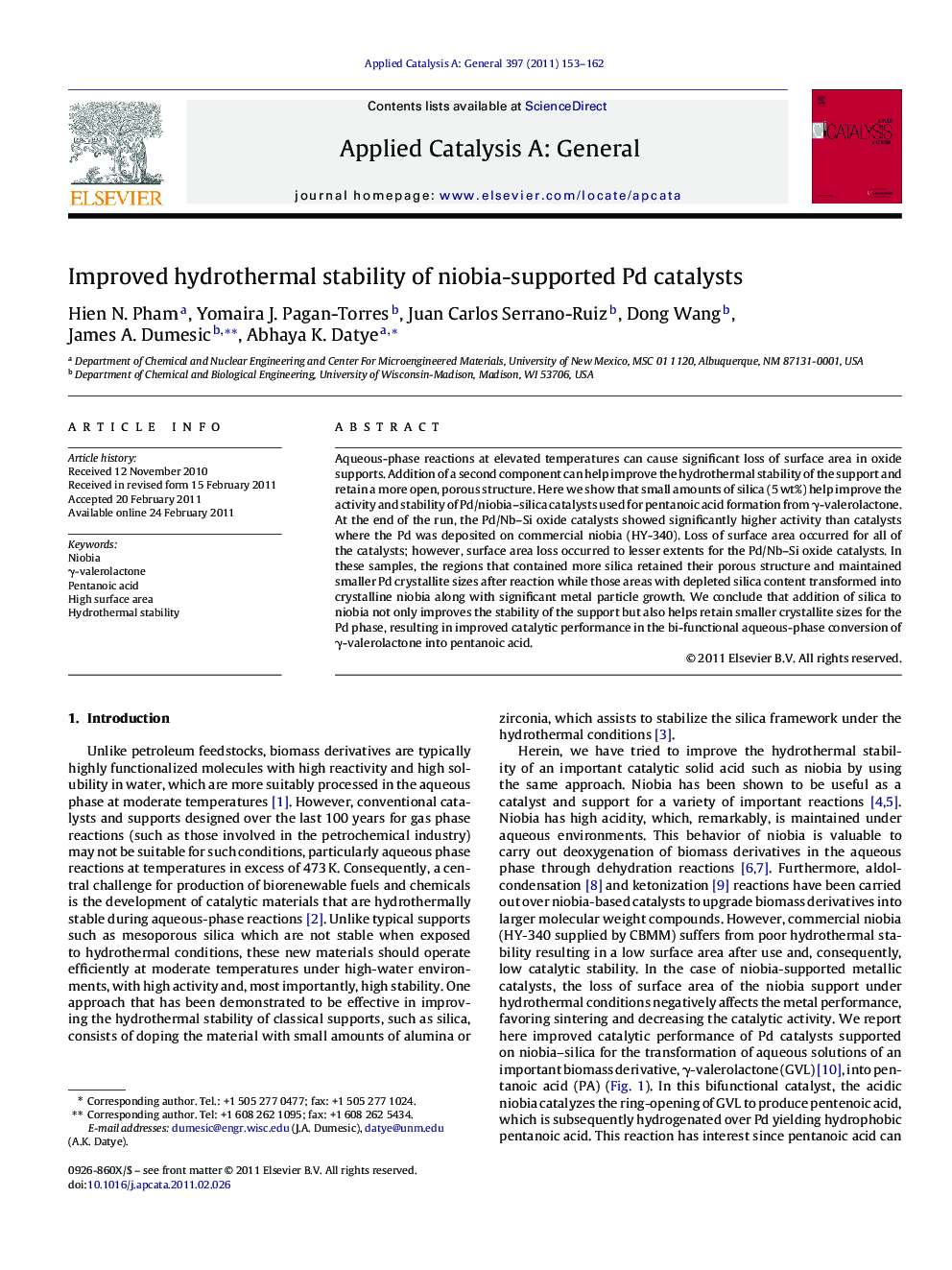| Article ID | Journal | Published Year | Pages | File Type |
|---|---|---|---|---|
| 41716 | Applied Catalysis A: General | 2011 | 10 Pages |
Aqueous-phase reactions at elevated temperatures can cause significant loss of surface area in oxide supports. Addition of a second component can help improve the hydrothermal stability of the support and retain a more open, porous structure. Here we show that small amounts of silica (5 wt%) help improve the activity and stability of Pd/niobia–silica catalysts used for pentanoic acid formation from γ-valerolactone. At the end of the run, the Pd/Nb–Si oxide catalysts showed significantly higher activity than catalysts where the Pd was deposited on commercial niobia (HY-340). Loss of surface area occurred for all of the catalysts; however, surface area loss occurred to lesser extents for the Pd/Nb–Si oxide catalysts. In these samples, the regions that contained more silica retained their porous structure and maintained smaller Pd crystallite sizes after reaction while those areas with depleted silica content transformed into crystalline niobia along with significant metal particle growth. We conclude that addition of silica to niobia not only improves the stability of the support but also helps retain smaller crystallite sizes for the Pd phase, resulting in improved catalytic performance in the bi-functional aqueous-phase conversion of γ-valerolactone into pentanoic acid.
Graphical abstractFigure optionsDownload full-size imageDownload high-quality image (232 K)Download as PowerPoint slideHighlights► Pd/niobia for conversion of γ-valerolactone (GVL) to pentanoic acid (PA). ► Correlation between loss of surface area of niobia support and Pd sintering. ► Silica addition to niobia leads to partial retention of the open, porous structure. ► Silica-modified niobias preserve a higher amount of acid sites after GVL reaction. ► Control over Pd sintering is the crucial factor for improving catalytic stability.
